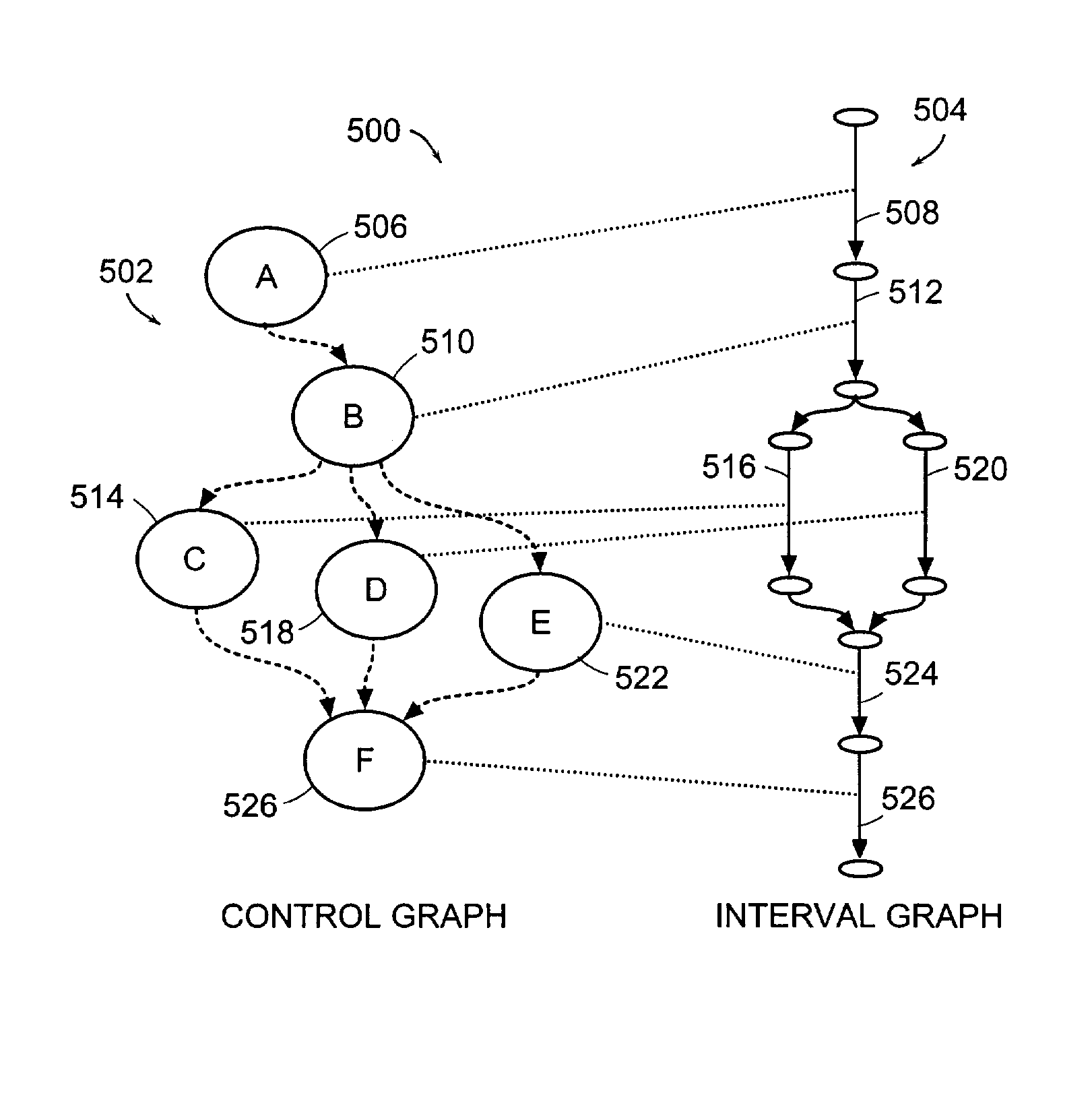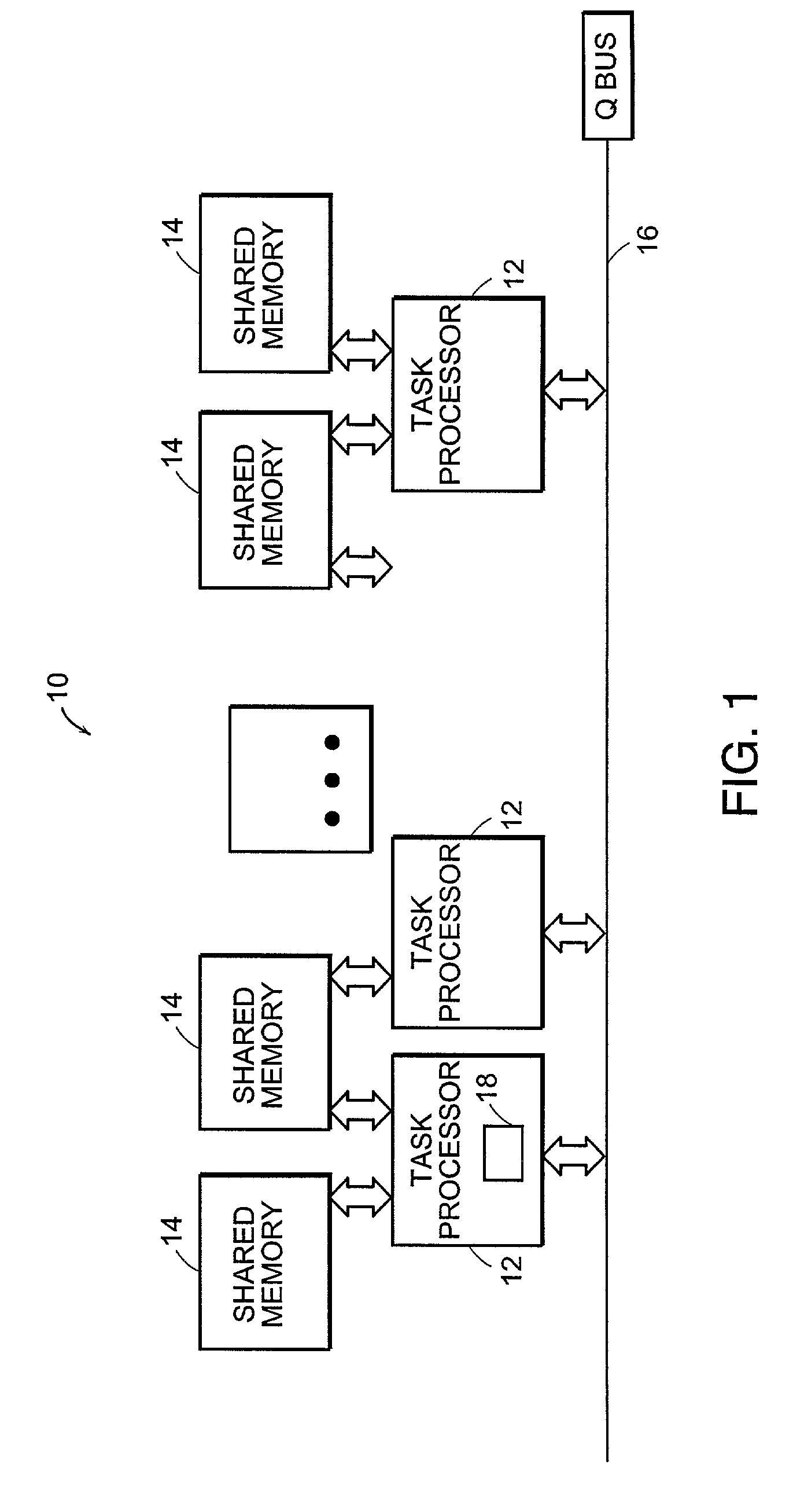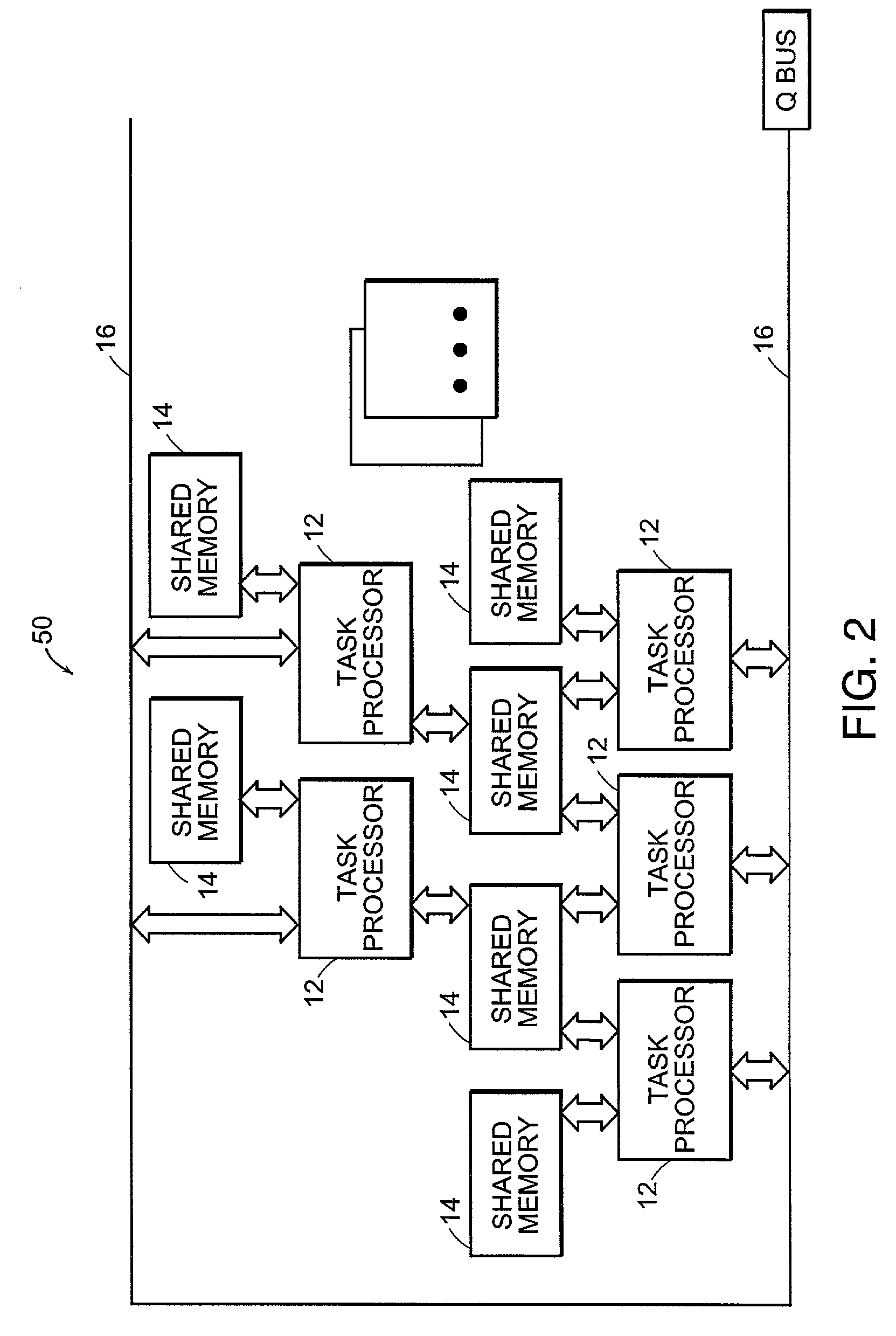Compiler for multiple processor and distributed memory architectures
a distributed memory and compiler technology, applied in the field of compilers and methods of compiling high-level languages, can solve the problems of low integration, undesirable for many applications, and relatively high cost per chip
- Summary
- Abstract
- Description
- Claims
- Application Information
AI Technical Summary
Benefits of technology
Problems solved by technology
Method used
Image
Examples
Embodiment Construction
[0036]A compiler according to the present invention can be used to map a high-level language program that represents a task-level network of behaviors that describes an embedded system onto a multiple processor and distributed memory hardware architecture. Such an architecture is described in co-pending U.S. patent application Ser. No. 09 / 480,087 entitled “Designer Configurable Multi-Processor System,” filed on Jan. 10, 2000, which is assigned to the present assignee. The entire disclosure of U.S. patent application Ser. No. 09 / 480,087 is incorporated herein by reference.
[0037]Referring more particularly to the figures, FIG. 1 illustrates a schematic block diagram of a multi-processor architecture 10 that includes a plurality of task engines or task processors 12 that are in communication with a plurality of distributed shared memories 14. The task processors 12 are connected in a linear architecture. Each shared memory 14 connects to at most two of the plurality of task processors ...
PUM
 Login to View More
Login to View More Abstract
Description
Claims
Application Information
 Login to View More
Login to View More - R&D
- Intellectual Property
- Life Sciences
- Materials
- Tech Scout
- Unparalleled Data Quality
- Higher Quality Content
- 60% Fewer Hallucinations
Browse by: Latest US Patents, China's latest patents, Technical Efficacy Thesaurus, Application Domain, Technology Topic, Popular Technical Reports.
© 2025 PatSnap. All rights reserved.Legal|Privacy policy|Modern Slavery Act Transparency Statement|Sitemap|About US| Contact US: help@patsnap.com



